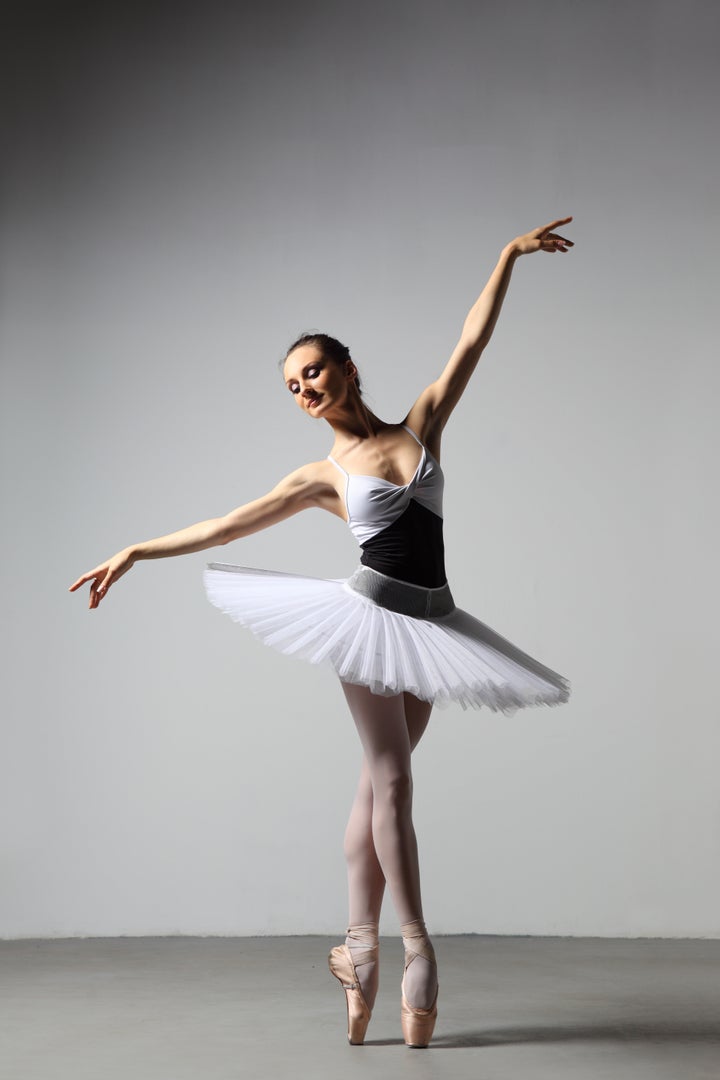
While working backstage for a family show at the Dance Center of Columbia College, one of the parents requested her money back -- claiming that the subject matter and the dancing were not "life-affirming."
Maybe she should take her kid to Swan Lake. Oh, wait... the swan and the prince both commit suicide.
Or Romeo and Juliet, where both Romeo and Juliet also commit suicide. (But Juliet doesn't really.)
Or Giselle, where she dies and the prince pirouettes himself to death.
I know: Perhaps they should go and see The Nutcracker, where Clara engages in a proverbial one-night stand and gets dumped by a shape-shifting prince the next morning. Oh, and the Sugar Plum Fairy is fat.
How's that for life-affirming?
But ballet is changing. Or at least, that's the claim from The Huffington Post blogger and author Deirdre Kelly.
The last great debate about ballet was that it was dying... now we say it's changing.
Either way, Kelly's claim that women are now both full-bodied and put in positions of power is decidedly skewed.
The great majority of artistic directors of the major ballet companies are male. While eating disorders may not be as prevalent as they once were due to the increasingly athletic demands of the artform, thin is still in. Add to this the enormous disparity of the number of ballerinas to the number of jobs available, and ballet is still very much a man's game.
You could think of it through the eyes of the recent series on Ovation: A Chance to Dance. The ballet boys (men, I might add), went around the country and auditioned hundreds of women... and dozens of men. Ultimately, they would end up with eight women and four men in their company.
You do the math.
Perhaps there is a model for the future in Gallim Dance, the company that rolled through the Dance Center with its "un-life-affirming" dancing. Headed by Andrea Miller (a former Batsheva dancer), the company is run by an executive director, production/stage manager and lighting director -- all of whom are women in their 20s and 30s.
But this is the exception, not the rule.
Now I'm not saying that ballet hasn't changed since the Balanchine era, and I'm certainly not suggesting that it can't -- or won't -- become everything that Ms. Kelly wants is to be. I just don't think we're there yet. It's going to take generations, time, creation of jobs, a different economy and a total shift of perception for ballet to take on a point of view where women are no longer the sylphs, but the ladies in charge. It's also going to take audience members, critics and artistic directors reaching outside of our rigid traditions and redefining what ballet looks like, what dancers look like and what a ballet company should look like.
That's a very big reach... are we prepared to make it?
Who knows. Maybe we will, or maybe we won't. My point is, don't sign up your daughter for ballet if you want a life affirming, feminist art form where she will feel good about her body. Not yet, anyway. Sign up your daughter for ballet because it teaches her grace, poise, discipline and tradition. Sign her up for ballet because you want her to participate in a rich history of men and women that honors tragedy, love, death, and narrative through beauty.
And because she gets to wear cute, sparkly tutus that look good in the photos on the mantle.
